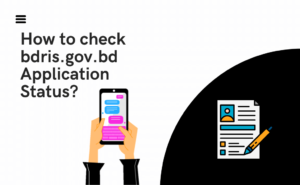In today’s digital age, chatbots have become an integral part of various industries. These virtual assistants can handle customer inquiries, provide support, and even facilitate transactions. While text-based chatbots are commonly used, voice-activated chatbots offer a more intuitive and user-friendly experience. In this beginner’s guide, we will explore the process of creating voice-activated chatbots using natural language processing (NLP). Here are the key steps to creating a voice-activated chatbot with NLP, whether you use it for sweet bonanza freeplay or a personal project:
Define the Purpose and Scope
Before diving into development, it’s essential to define the purpose and scope of your chatbot. Determine the specific tasks or services it will provide and identify the target audience. This clarity will guide the design and functionality of your chatbot.
Choose a Development Platform
There are several development platforms available that offer NLP capabilities for chatbot creation. Some popular options include Dialogflow, Amazon Lex, Microsoft Bot Framework, and IBM Watson Assistant. Research each platform’s features, pricing, and ease of integration to find the one that best suits your needs.
Also Check:- “Is AI the Game Changer of the Future?”
Design the Conversation Flow
Create a conversational flowchart to visualize how the user will interact with the chatbot. Consider the different paths the conversation can take based on user inputs. It’s important to design a smooth and intuitive user experience to ensure that the chatbot understands and responds appropriately.
Train the NLP Model
To enable the chatbot to understand and interpret user inputs, you need to train the NLP model. This involves providing the model with a large dataset of sample utterances, along with their corresponding intents. An intent represents the purpose or meaning behind a user’s statement or question. The more diverse and comprehensive your training dataset, the better the chatbot’s performance will be.
Implement Speech Recognition
For voice-activated chatbots, integrating speech recognition technology is crucial. Speech recognition converts spoken language into written text, which can then be processed by the NLP model. Popular speech recognition APIs include Google Cloud Speech-to-Text, IBM Watson Speech to Text, and Microsoft Azure Speech to Text. Choose the one that aligns with your development platform and implement it accordingly.
Integrate Text-to-Speech
To enable the chatbot to respond verbally, you need to integrate text-to-speech (TTS) functionality. TTS converts written text into spoken language. There are several TTS APIs available, such as Google Cloud Text-to-Speech, IBM Watson Text to Speech, and Amazon Polly. Select the appropriate TTS service and integrate it into your chatbot application.
Test and Refine
Testing is a crucial step in chatbot development. Conduct thorough testing to ensure that the chatbot accurately understands user inputs, responds appropriately, and handles various scenarios. Collect feedback from users and iterate on your chatbot’s design and functionality to enhance its performance over time.
Deploy and Monitor
Once you are satisfied with the chatbot’s performance, it’s time to deploy it to your desired platform. Whether it’s a website, mobile app, or messaging platform, ensure that the chatbot is integrated seamlessly. Monitor its usage, gather analytics, and track user feedback to identify areas for improvement and make necessary adjustments.
Top Considerations to Keep in Mind
Privacy and Security
When dealing with voice-activated chatbots, it’s crucial to prioritize user privacy and data security. Ensure that you comply with relevant data protection regulations and implement encryption and secure storage mechanisms for any sensitive user information.
Continuous Learning
To improve the performance of your chatbot over time, consider implementing a mechanism for continuous learning. This involves analyzing user interactions, gathering feedback, and updating the NLP model to handle new queries or improve existing responses. Regularly updating and enhancing your chatbot will help provide a better user experience.
Multilingual Support
If you intend to cater to a global audience, consider adding multilingual support to your chatbot. This may require training the NLP model on additional languages and integrating language detection capabilities to identify the user’s preferred language.
Error Handling and Fallback Options
It’s essential to anticipate and handle errors or situations where the chatbot may not understand user inputs. Implement fallback options, such as offering predefined responses or providing suggestions to rephrase the query. Clear error messages and a user-friendly interface can help users navigate any issues they encounter.
Natural Language Understanding (NLU) Techniques
While the steps outlined above provide a basic approach to building a voice-activated chatbot with NLP, there are more advanced NLU techniques that you can explore. These techniques, such as entity recognition, sentiment analysis, and contextual understanding, can enhance your chatbot’s capabilities and enable more sophisticated interactions.
Author Profile
-
Raj Singh is a highly experienced digital marketer, SEO consultant, and content writer with over 8 years of experience in the industry.
As a content writer, Raj has a talent for crafting engaging and informative content that resonates with audiences. He has a keen eye for detail and a deep understanding of SEO best practices.
Latest entries
 ApplicationFebruary 20, 2024Maha Food Hall Ticket 2024 Download Now- with Exam Dates
ApplicationFebruary 20, 2024Maha Food Hall Ticket 2024 Download Now- with Exam Dates ApplicationFebruary 18, 2024tsbie m services hall ticket download Inter 1st, 2nd year [2024]
ApplicationFebruary 18, 2024tsbie m services hall ticket download Inter 1st, 2nd year [2024] AppsFebruary 18, 2024Register on Nivesh Mitra App and Download Certificate/Noc
AppsFebruary 18, 2024Register on Nivesh Mitra App and Download Certificate/Noc AppsFebruary 17, 2024Cozovmoni App Download for Android (2024)-Cozovmoni.com
AppsFebruary 17, 2024Cozovmoni App Download for Android (2024)-Cozovmoni.com





